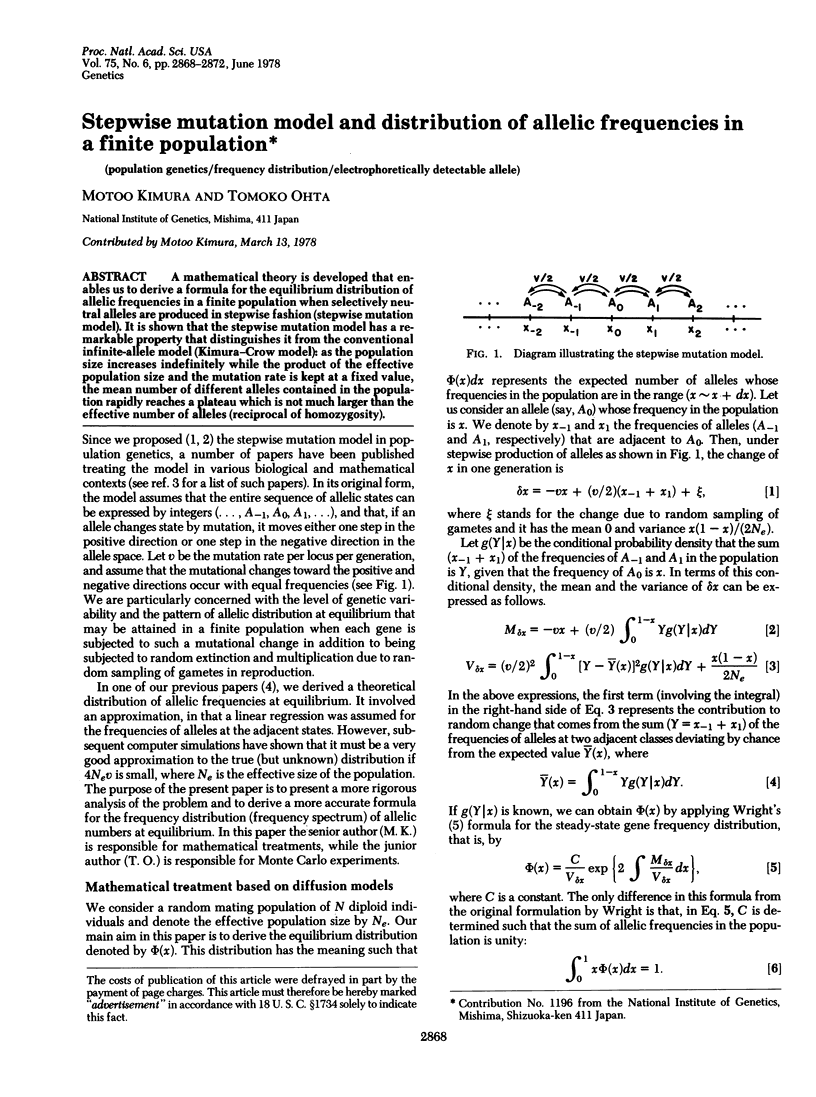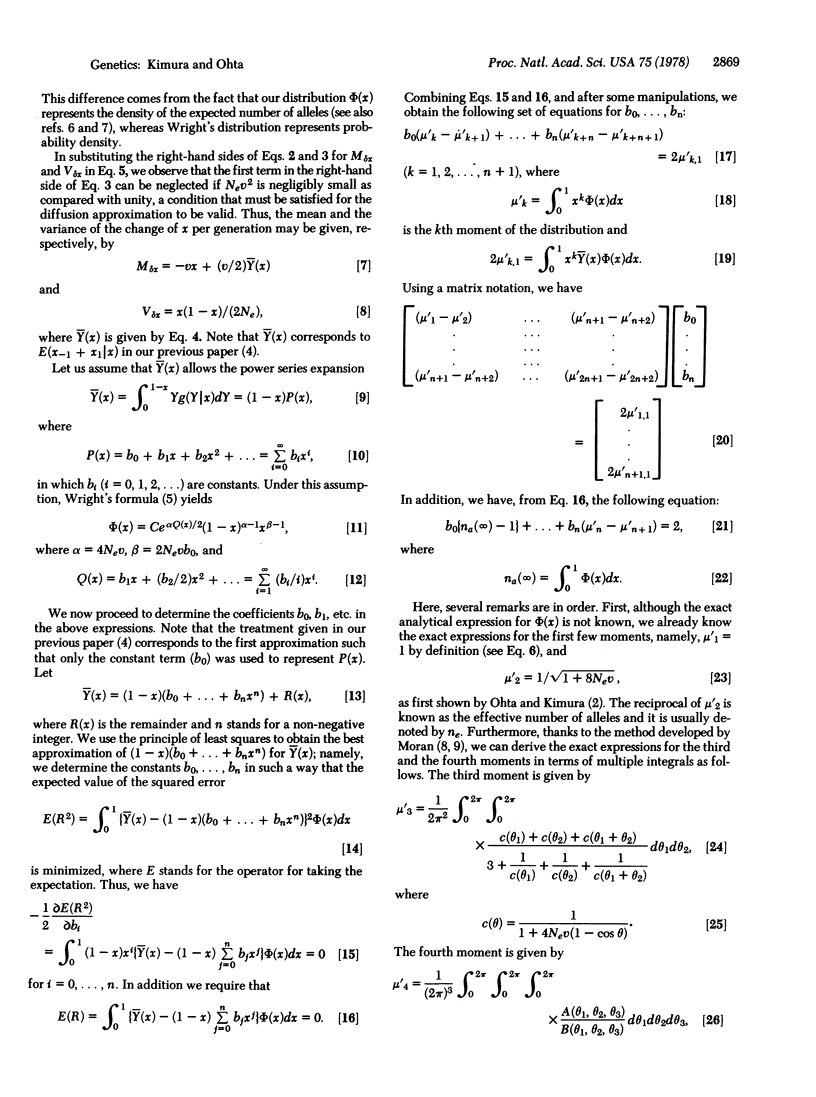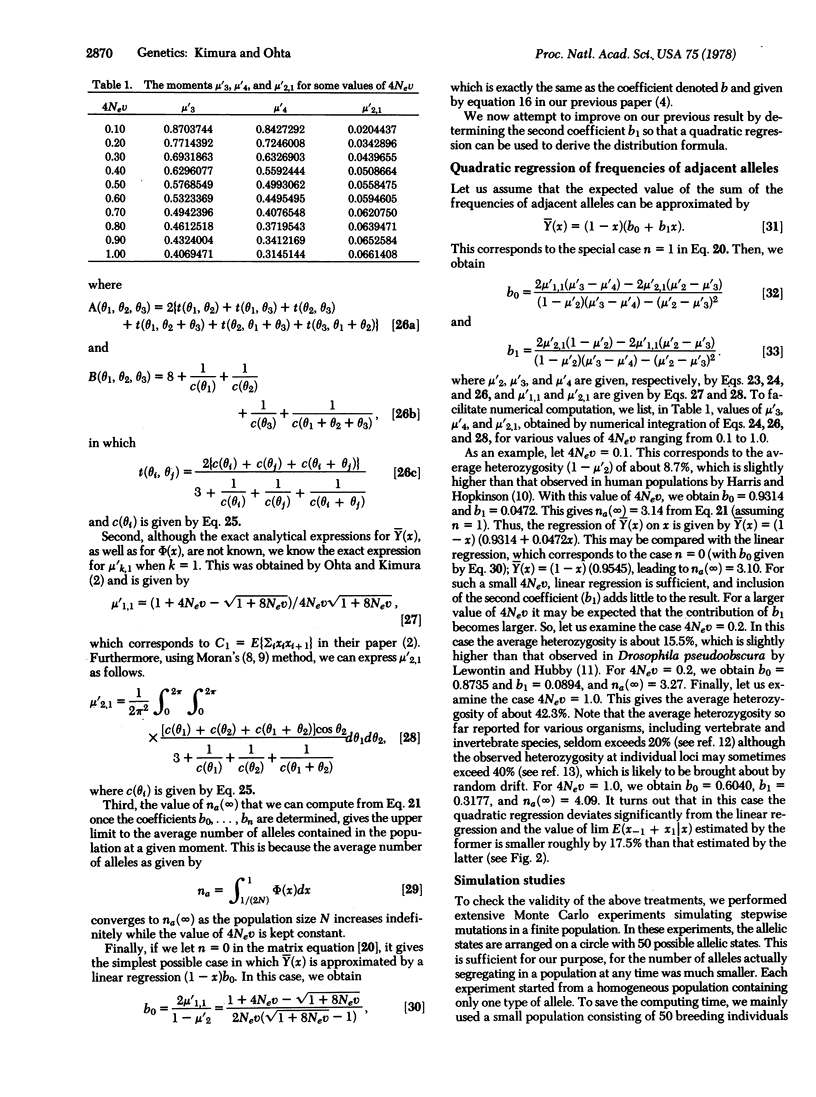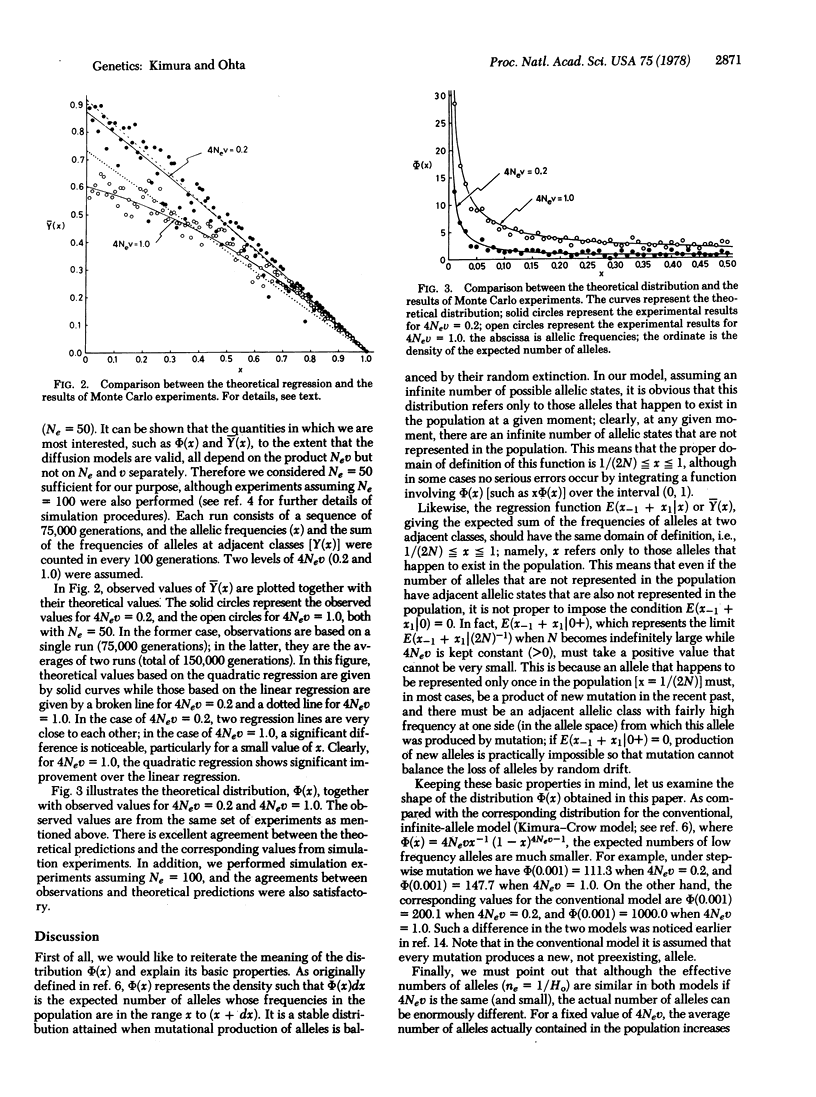Abstract
A mathematical theory is developed that enables us to derive a formula for the equilibrium distribution of allelic frequencies in a finite population when selectively neutral alleles are produced in stepwise fashion (stepwise mutation model). It is shown that the stepwise mutation model has a remarkable property that distinguishes it from the conventional infinite allele model (Kimura-Crow model): as the population size increases indefinitely while the product of the effective population size and the mutation rate is kept at a fixed value, the mean number of different alleles contained in the population rapidly reaches a plateau which is not much larger than the effective number of alleles (reciprocal of homozygosity).
Full text
PDF




Selected References
These references are in PubMed. This may not be the complete list of references from this article.
- Ewens W. J. The sampling theory of selectively neutral alleles. Theor Popul Biol. 1972 Mar;3(1):87–112. doi: 10.1016/0040-5809(72)90035-4. [DOI] [PubMed] [Google Scholar]
- Fuerst P. A., Chakraborty R., Nei M. Statistical studies on protein polymorphism in natural populations. I. Distribution of single locus heterozygosity. Genetics. 1977 Jun;86(2 Pt 1):455–483. [PMC free article] [PubMed] [Google Scholar]
- Harris H., Hopkinson D. A. Average heterozygosity per locus in man: an estimate based on the incidence of enzyme polymorphisms. Ann Hum Genet. 1972 Jul;36(1):9–20. doi: 10.1111/j.1469-1809.1972.tb00578.x. [DOI] [PubMed] [Google Scholar]
- KIMURA M., CROW J. F. THE NUMBER OF ALLELES THAT CAN BE MAINTAINED IN A FINITE POPULATION. Genetics. 1964 Apr;49:725–738. doi: 10.1093/genetics/49.4.725. [DOI] [PMC free article] [PubMed] [Google Scholar]
- Kimura M. Genetic variability maintained in a finite population due to mutational production of neutral and nearly neutral isoalleles. Genet Res. 1968 Jun;11(3):247–269. doi: 10.1017/s0016672300011459. [DOI] [PubMed] [Google Scholar]
- Kimura M., Ohta T. Distribution of allelic frequencies in a finite population under stepwise production of neutral alleles. Proc Natl Acad Sci U S A. 1975 Jul;72(7):2761–2764. doi: 10.1073/pnas.72.7.2761. [DOI] [PMC free article] [PubMed] [Google Scholar]
- Kimura M., Ohta T. Mutation and evolution at the molecular level. Genetics. 1973 Apr;73(Suppl):19–35. [PubMed] [Google Scholar]
- Lewontin R. C., Hubby J. L. A molecular approach to the study of genic heterozygosity in natural populations. II. Amount of variation and degree of heterozygosity in natural populations of Drosophila pseudoobscura. Genetics. 1966 Aug;54(2):595–609. doi: 10.1093/genetics/54.2.595. [DOI] [PMC free article] [PubMed] [Google Scholar]
- Maruyama T., Kimura M. Theoretical study of genetic variability, assuming stepwise production of neutral and very slightly deleterious mutations. Proc Natl Acad Sci U S A. 1978 Feb;75(2):919–922. doi: 10.1073/pnas.75.2.919. [DOI] [PMC free article] [PubMed] [Google Scholar]
- Moran P. A. Wandering distributions and the electrophoretic profile. II. Theor Popul Biol. 1976 Oct;10(2):145–149. doi: 10.1016/0040-5809(76)90012-5. [DOI] [PubMed] [Google Scholar]
- Moran P. A. Wandering distributions and the electrophoretic profile. Theor Popul Biol. 1975 Dec;8(3):318–330. doi: 10.1016/0040-5809(75)90049-0. [DOI] [PubMed] [Google Scholar]
- Ota T. Statistical analyses of Drosophila and human protein polymorphisms. Proc Natl Acad Sci U S A. 1975 Aug;72(8):3194–3196. doi: 10.1073/pnas.72.8.3194. [DOI] [PMC free article] [PubMed] [Google Scholar]
- Wright S. The Distribution of Gene Frequencies Under Irreversible Mutation. Proc Natl Acad Sci U S A. 1938 Jul;24(7):253–259. doi: 10.1073/pnas.24.7.253. [DOI] [PMC free article] [PubMed] [Google Scholar]


